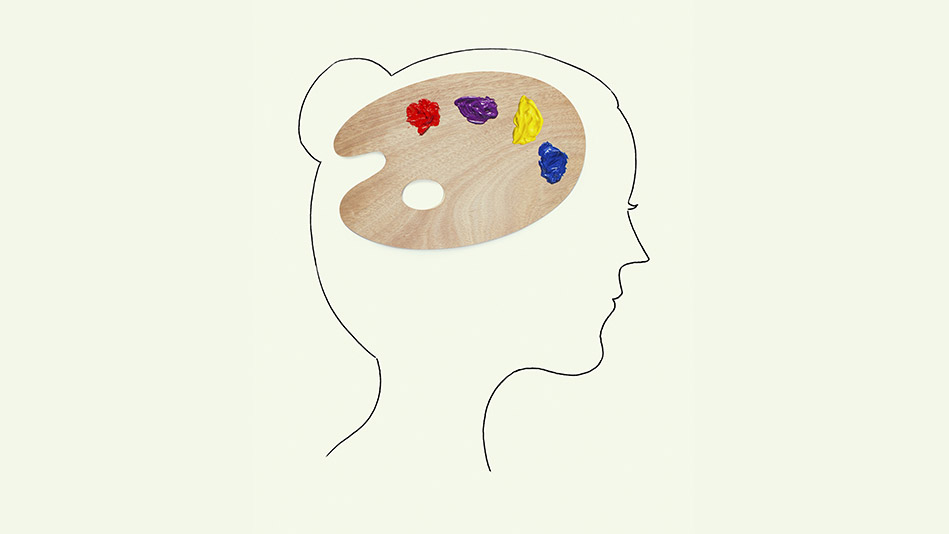The Easiest Way to Get a Better, Smarter Brain
Extraordinary abilities—from memory to supercharged creativity—may be within reach for all of us, says neuroscientist Berit Brogaard, PhD, coauthor of the new book The Superhuman Mind. We asked her to tell us more.

Illustration: Javier Perez
Q: You say ordinary people possess talents they haven't even tapped into. Can you explain?
A: Most people assume that folks with amazing mental abilities were born this way and that they operate on a plane that's inaccessible to the rest of us. But nothing could be further from the truth. For more than a decade, I've studied people with uncanny abilities—card counters who can beat the house, self-taught artists, people who can remember an unbelievable amount of information. Here's the thing: These weren't innate skills—they were acquired.
Q: How?
A: We consciously use only a small portion of our brain, but we're constantly performing complex operations in other areas even though we're unaware of it. Savants gain access to unconscious areas when the brain's bossy left hemisphere is muted. The left is in charge of much of our organized thought and decision-making and tends to suppress the right side, which generally rules creative activities.
Q: But how can the average person achieve this? Is it simply a matter of working or thinking harder?
A: Thinking harder will not tap into parts of our brain that we don't consciously use; it will just use the same regions more. To reach new areas, you have to get your brain out of its comfort zone. There are various ways to do it, but I believe the easiest is by training yourself in a neurological phenomenon called synesthesia, in which the brain makes unusual associations between things like sounds, colors and emotions. Looking at the number 3, for example, might lead a synesthete to see the color green. Or the word kiss might flood her mouth with the flavor of bread soaked in tomato soup. When the brain makes these associations, it generates new neural connections—and these connections may help to spur creativity and improve memory.
Q: So how do you develop synesthesia?
A: A study in the journal PLOS One found that it could be activated in as little as two weeks. To get started, consciously associate things you normally wouldn't, and rehearse those associations until you internalize them. I know it sounds wonky, but it works. I recently teamed up with Johns Hopkins researchers to help a woman unlock her ability to write evocative poetry. First, we had her make a list of emotions (like happiness, love, anger) and match each one with a sound (a thunderclap, the hiss of a teakettle), a taste (zesty, burnt), a smell (fresh-cut grass, smoke from a campfire) and a color. She kept the list on her nightstand and looked at it in the morning or at night. After just a month, she began to experience her emotions as sounds, tastes, smells and colors. When she felt jealousy, she heard a hissing sound and saw a pot of liquid spewing dark magenta. She channeled this newfound way of experiencing emotions into writing poetry like she never had before.
A: Most people assume that folks with amazing mental abilities were born this way and that they operate on a plane that's inaccessible to the rest of us. But nothing could be further from the truth. For more than a decade, I've studied people with uncanny abilities—card counters who can beat the house, self-taught artists, people who can remember an unbelievable amount of information. Here's the thing: These weren't innate skills—they were acquired.
Q: How?
A: We consciously use only a small portion of our brain, but we're constantly performing complex operations in other areas even though we're unaware of it. Savants gain access to unconscious areas when the brain's bossy left hemisphere is muted. The left is in charge of much of our organized thought and decision-making and tends to suppress the right side, which generally rules creative activities.
Q: But how can the average person achieve this? Is it simply a matter of working or thinking harder?
A: Thinking harder will not tap into parts of our brain that we don't consciously use; it will just use the same regions more. To reach new areas, you have to get your brain out of its comfort zone. There are various ways to do it, but I believe the easiest is by training yourself in a neurological phenomenon called synesthesia, in which the brain makes unusual associations between things like sounds, colors and emotions. Looking at the number 3, for example, might lead a synesthete to see the color green. Or the word kiss might flood her mouth with the flavor of bread soaked in tomato soup. When the brain makes these associations, it generates new neural connections—and these connections may help to spur creativity and improve memory.
Q: So how do you develop synesthesia?
A: A study in the journal PLOS One found that it could be activated in as little as two weeks. To get started, consciously associate things you normally wouldn't, and rehearse those associations until you internalize them. I know it sounds wonky, but it works. I recently teamed up with Johns Hopkins researchers to help a woman unlock her ability to write evocative poetry. First, we had her make a list of emotions (like happiness, love, anger) and match each one with a sound (a thunderclap, the hiss of a teakettle), a taste (zesty, burnt), a smell (fresh-cut grass, smoke from a campfire) and a color. She kept the list on her nightstand and looked at it in the morning or at night. After just a month, she began to experience her emotions as sounds, tastes, smells and colors. When she felt jealousy, she heard a hissing sound and saw a pot of liquid spewing dark magenta. She channeled this newfound way of experiencing emotions into writing poetry like she never had before.



